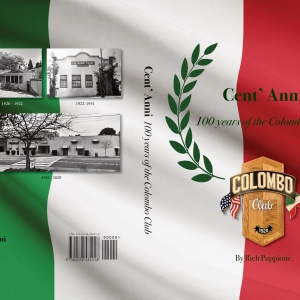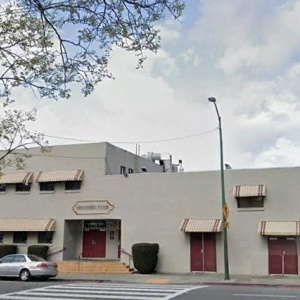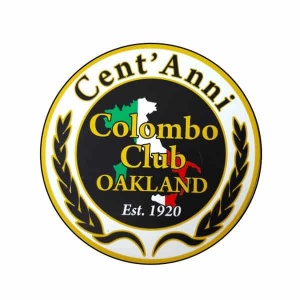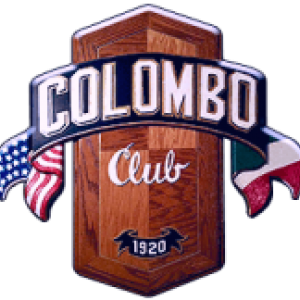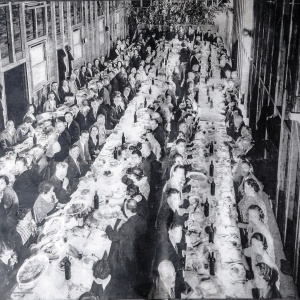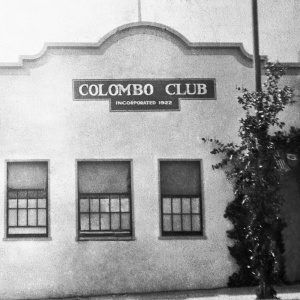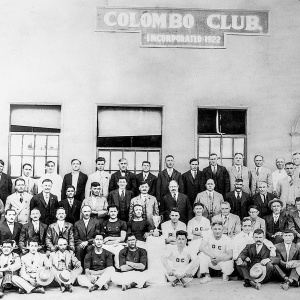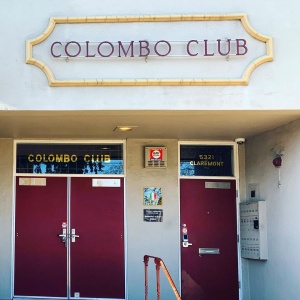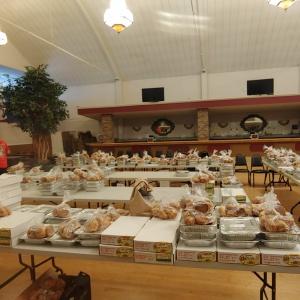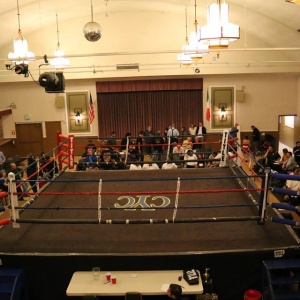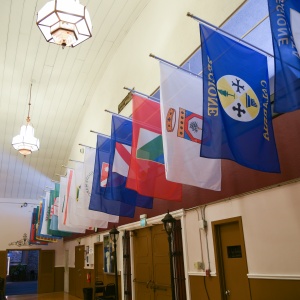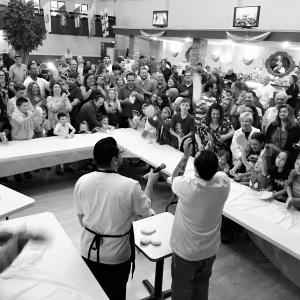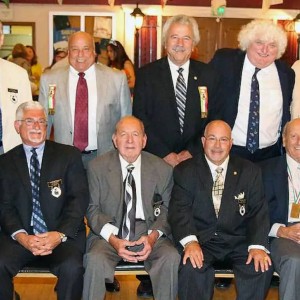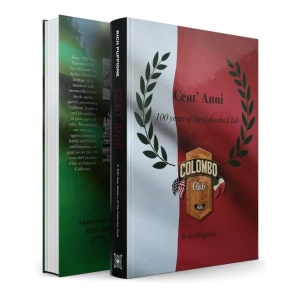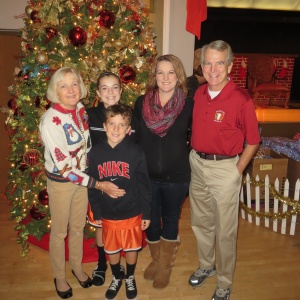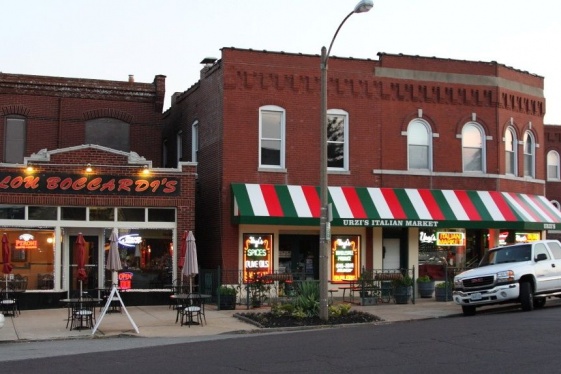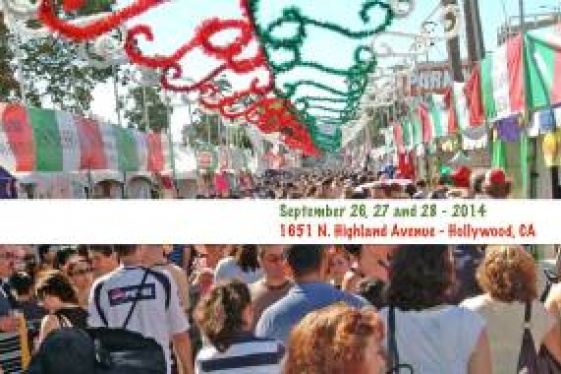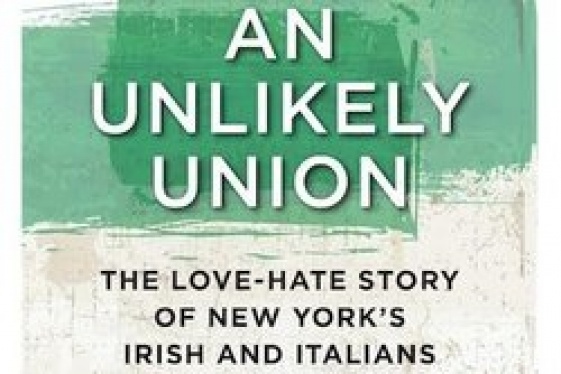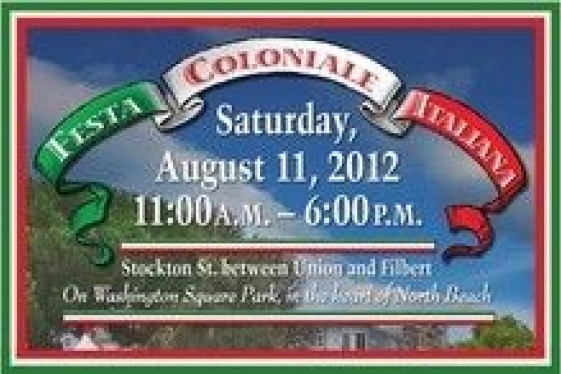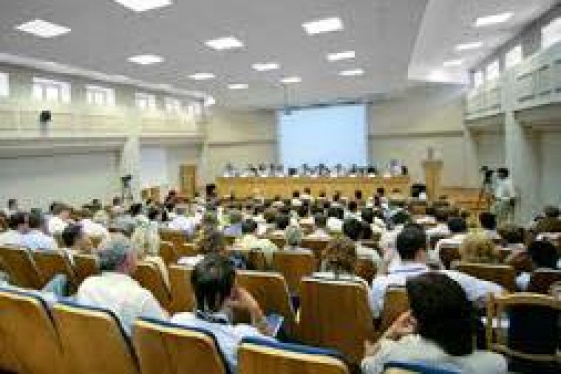
Rich Puppione (Author of the book "One Hundred Years: A 100 Year History of the Colombo Club")
Un secolo di Italia a Oakland in California, anzi un secolo + 1: benvenuti al Colombo Club

Without the pandemic, the 100th anniversary of a prestigious Italian club in California, founded in 1920, would have been celebrated last year: the Colombo Club. The round-figure anniversary called for major celebrations, but we know that 2020 didn't allow for that.
There is, however, a book that celebrates the club's history, and this year it will be celebrated as it deserves. We are very happy to have our guest today Rich Puppione, author of the book "One Hundred Years: A 100 Year History of the Colombo Club." We greet him and wish him and through him all the members of the club, of which he was formerly the President.
Hi Rich, first of all, please tell us something about you and your Italian heritage
My grandfather, Pietro Puppione and grandmother, Lucia Festa, were from Scandelluzza in the Piemonte region of Italy. They immigrated to the United States in 1913 with my father Valentino Puppione and my aunt Rena Puppione. They traveled across the United States to meet with my grandfather’s brother who lived in Oakland, CA. My grandfather, Pietro, was a charter member of the Colombo Club. I have been President of the club twice. Both of my sons, Christopher and Robert, are club members.
You are the author of the book "Cent’Anni: A 100 Year History of the Colombo Club". It's hard to pack 100 years into one answer, but we ask you to try: can you tell us about them?
The history of the Colombo Club is a story that begins with early Italian immigrants and their desire to preserve and celebrate Italian cultural traditions, customs and heritage in the United Sates. In 1919, Maggiorino Lovisone offered the use of the basement in his house in Oakland, California, for some local Piemontese to gather. These gatherings became well ingrained in the livelihood of twenty two of these men and the idea had been discussed of forming a club that would offer ongoing social contact, preserve and pass on traditions and afford the members and their families a permanent place to gather for playing cards, playing bocce ball, eating dinner and dancing. Friendships and close family ties resulted. These "club" fellowship gatherings at the Lovisone residence evolved to become the Colombo Club, founded on August 22, 1920, by 22 men from the Piemonte region.
The membership grew and soon the Lovisone home became too small. It was decided to add 12 more members to the original roster, since they needed more money ($250 each) to build a building. They moved into the building in 1922. The local newspaper reported that ““There are several Italian clubs in the East Bay, but the Colombo Club is the first to erect its own building, a comparatively modest structure located at 4915 Broadway.” The building provided a tremendous sense of pride and belonging to the men and families who called the Colombo Club their own. It was decided that the purpose of the club would be entirely social, dedicated to the moral and physical well being of its members, promotion of the best interests of the community and the highest ideals of American citizenship and the best Italian family traditions, customs and folklore.
The decades of the 1930's and 1940's were highlighted by more membership growth and an increased level of athletic involvement and social activities. Pallone, Bocce, running and soccer were all passionately played by the members. Bocce and Pallone teams were formed to compete not only against other local Italian clubs in the Bay Area, but also in statewide competitions against other Italian clubs up and down the State. Dinners and dances were held frequently.
As the membership grew the ballroom, dining room and kitchen were inadequate to hold the number of members and guests who came to the club dinners and dances. The membership decided that it was necessary to build and relocate to a larger facility. A larger facility was built a few blocks away from the existing club. A grand opening celebration was held on December 16, 1951. Even after this wonderful building was built there were still skeptics who thought that the idea of building this structure was too expensive and a foolish idea. One guest was said to have been overheard saying, "Tonight, the Colombo Club gets baptized, and a year from now we'll be having a funeral for it." The Colombo Club proved it skeptics wrong.
In December 1951, the last minutes of the Board meetings written in Italian were recorded. Starting in 1952 the minutes for the Board meetings were written in English.
The Colombo Club has served as a longtime hub for the mutual benefit of the Italian-American community in the Oakland area. It boasts a host of renowned visitors; athletes, civic leaders and politicians alike. Oakland was home to the Oaks, a baseball club managed by Casey Stengel who in 1948 took the team to the Pacific Coast League Championship. Many players, sons of Italian immigrants, stopped at the club to socialize and enjoy traditional Italian wine and food, fellowship and camaraderie.
Martinez-born Joltin’ Joe DiMaggio who signed with the New York Yankees in 1936, visited the club in 1958. When DiMaggio came into the club, he showed up after everyone who had come to see him had already gone downstairs to the dining room. Joe walked in the club and the only people in the room were the bartenders. Joe said, “What gives, no one is here?” He was the escorted downstairs where there were 650 guys in the dining room waiting for him. They greeted him with loud cheers. Joe then said, "This is my kind of party."
On June 17 – 18, 1963, Frank Sinatra paid for all the expenses for a group from the club to fly to California and Nevada to see his show.
Retired and undefeated heavyweight boxing hall of fame champion Rocky Marciano was in the Bay Area in 1969 and he came to the club to attend the annual Colombo Club Sports Night on Friday night, January 24, 1969. He appeared as a guest for a Boys' Town of Italy benefit. It was perhaps the most well attended event at the Club. The cost for a ticket was $8.00 per person.
After the past, let's talk about the present and the future of the Colombo Club: what are your activities and what are you preparing for the years to come?
The club currently holds three “birthday dinners” a month for members and guests with a different menu every month. There is also one “family dinner” a month which includes dancing after dinner. Club dinners are $22 for members and $28 for guests. Dinners include antipasto, salad, sourdough French rolls, pasta, a main course, dessert, wine, and coffee. Members can book the club for weddings, anniversaries, retirement dinner, funerals, birthdays, etc.
The club holds two Bocce Tournaments a year, a yearly picnic, a Children’s Christmas Party for families draws crowds of over 800, a yearly golf tournament, a Halloween Night, a Scholarship Night for graduating high school seniors, a dinner honoring Past Presidents, an anniversary dinner, yearly picnics, opera nights, charitable events, scholarship dinners, sports nights, pizza nights, and even boxing matches. Club dinner dances are very popular with attendance numbering over 500 people.
The club hosts a welcome reception for each new Italian Consul General for the San Francisco region, and also hosts delegations for different Italian cities. Most recently a reception for the Mayor of Genoa and a delegation from the city of Isola della Femmine. Besides, before the pandemic, the club had Italian classes for children called “Bambini Ciao.”
Today, the Colombo Club is recognized as one the largest Italian social clubs in the United States. It is firmly committed to the ideals of the charter members, striving to provide families and guests with social activities that honor Italian heritage and preserve traditional Italian customs. The gatherings of the original group of men who longed for companionship and a connection to Italy has grown to a fraternity of more than 1000 members in the Colombo Club and 167 members in the Colombo Club Women’s Club.
What is the history of Italian emigration to Oakland, California? Who were the Italians who arrived there?
Between 1880 and 1920 more than four million Italians immigrated to America in search of jobs and a better life for their families. All had hopes for greater opportunity in the United States. Many immigrants after enduring the almost month-long Atlantic crossing stopped at Ellis Island and then took a 2,900-mile train ride to California, eventually settling in the Bay Area. The Temescal region of Oakland was popular predominantly for those from Italy's northern regions of Piedmont, Liguria, and Lombardy because it was affordable, had great weather for growing vegetables and had so many Italians that it was known as “Little Italy.”
A city next to Oakland is Piedmont, which got its name from the Piemonte region of Italy. Some Italians relocated from San Francisco after the devastating 1906 earthquake and fire, many more came to in search of opportunity and prosperity. One of the Colombo Club members recalled that his family and other immigrants from the Calabria area were not as wealthy as those from the northern regions and settled in a different part of Oakland.
The Italians, like other poor immigrants, were met with discrimination and suspicion from locals. As a result, families spent time together outside of work and formed social clubs with other immigrants from the same country. Some of the gatherings were so exclusive that people from only one region of the old country could join. Everything happened at these “clubs”: weddings, anniversaries, funerals and monthly celebrations. There were several different Italian clubs throughout the north Oakland region. These pioneers worked hard, typically at backbreaking labor, to build new lives. They raised a generation of children who succeeded in their own right and contributed in various ways to their community and nation.
In addition to your club, are there any places particularly important to the history of Italians in the Oakland area?
Between 1910 and 1930, Oakland had one of the biggest Italian populations in the California, ballooned from 3,800 to 6,360. In fact, delicatessens, produce shops, and retail food import shops owned by Italian Americans are still operating in the East Bay. For example, Toscana and Colombo bakeries were combined by the San Francisco French Bread company and then bought out by the Interstate Brands Corporation and is still in operation.
Several Colombo Club charter members worked in the Bilger quarry. The quarry is no longer in operation, but it still exists. The Oakland Scavenger Company, a garbage collection company, was most owned by Italiand from the Liguria region. There are nine Italian clubs still in operation in the East Bay region of the San Francisco Bay Area: the Alpicella Club, the Buon Tempo Club, the Colombo Club, the Fratellanza Club, Friends of Isola delle Femmine, the Galileo Club, the Italian American Federation, the Italian American League, the Ligure Club and the Solano Club.
Just a curiosity: how come your name is "Colombo Club" and not "Columbus Club"?
The reason is not clear. When the original charter members got together, they referred to themselves as the “Columbo Club.” Club minutes show that “In 1922, the name of the club was officially changed from “Columbo” to “Colombo.” We are not sure if it was even named after Christopher Columbus. Our records do not tell.
It's hard to imagine that this is not the case. On that note, I can't help but ask you about the attacks on Christopher Columbus. What do you think about that?
Following a lynching in New Orleans where a mob had murdered 11 innocent Italian immigrants, President Benjamin Harrison declared Columbus Day as a one-time national celebration. The proclamation was part of a wider effort after the lynching incident to placate Italian Americans and ease diplomatic tensions with Italy. Italians, like other nationalities, were seen as second class citizens and were persecuted. Celebrating Columbus was a key moment in overcoming that discrimination. I can see some reasons behind the current backlash, but Columbus was one of the people who helped bring the Italian culture to the new world and we are all richer for it.
You may be interested
-
“The Art of Bulgari: La Dolce Vita & Beyond,...
by Matthew Breen Fashion fans will be in for a treat this fall when the Fine Arts Museums...
-
“The Hill” St. Louis’ Little Italy
When the fire hydrants begin to look like Italian flags with green, red and white stripes,...
-
13th Annual Galbani Italian Feast of San Gen...
In September of 2002, some of Los Angeles' most prominent Italian American citizens got to...
-
1st Annual Little Italy Cannoli Tournament
Little Italy San Jose will be hosting a single elimination Cannoli tournament to coincide...
-
An Unlikely Union: The love-hate story of Ne...
Award-winning author and Brooklynite Paul Moses is back with a historic yet dazzling sto...
-
Candice Guardino Brings GILDA AND MARGARETTE...
Candice Guardino is adding to her list of successful theatrical productions with the debut...
-
Festa Coloniale Italiana 2012
We are very excited to announce that on Saturday, August 11, The San Francisco Italian Ath...
-
ISSNAF medical imaging science chapter meeti...
AGENDA 12.00 – 12.15 Light lunch12.15 – 12.30Welcome addresses Lorenzo Mannelli, MD, PhD...





